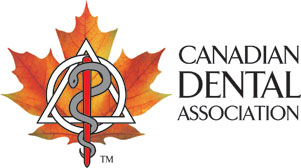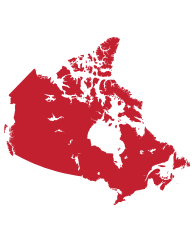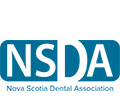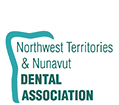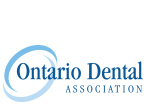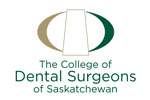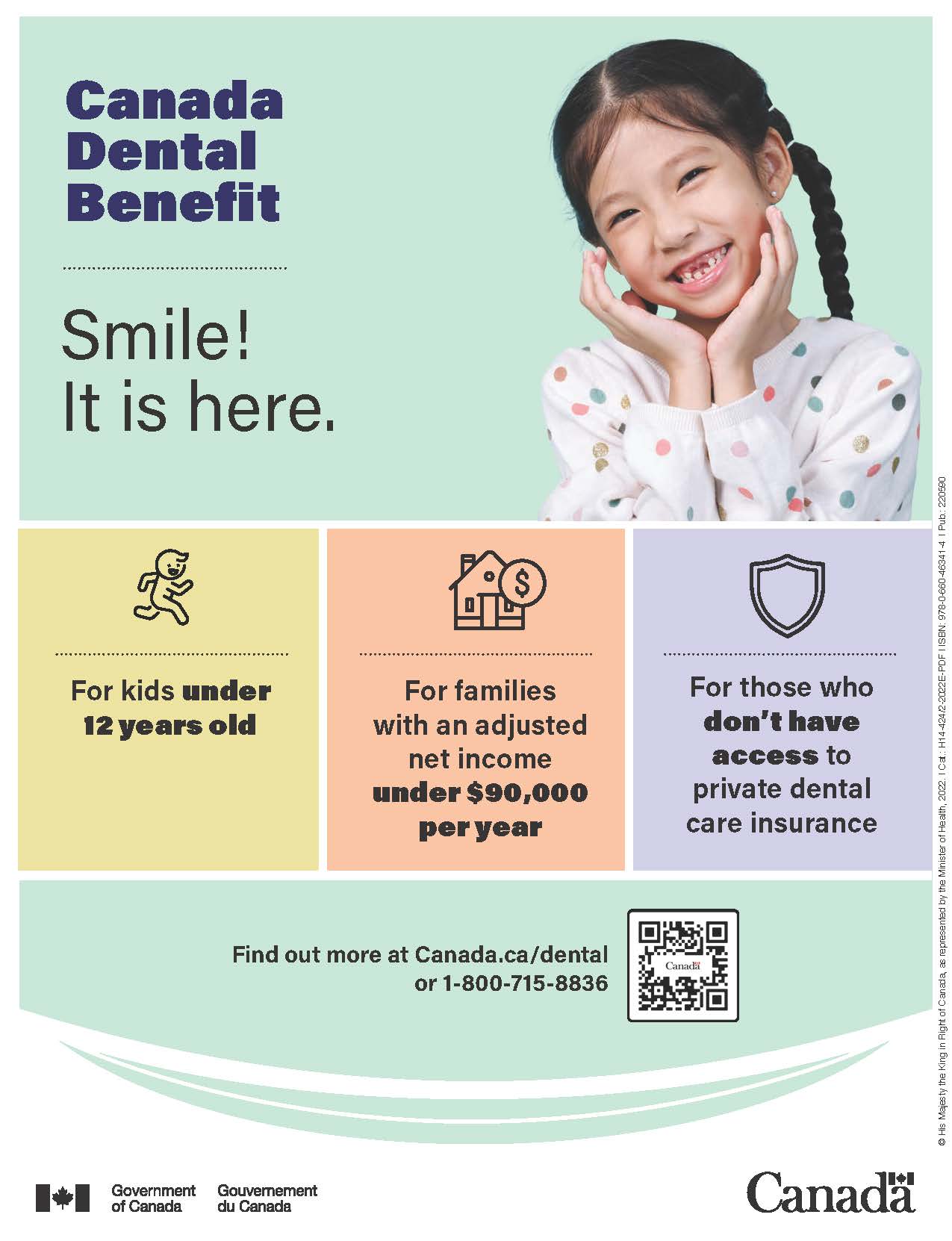
Tooth decay is the most common, but preventable, childhood chronic disease both in Canada and around the world. Oral diseases frequently begin in the preschool years which is why it is so important to establish good oral hygiene behaviours in those early years.
In March 2022, the federal government announced plans to enhance access to dental care for Canadian families with annual household incomes of less than $90,000.
Phase one of the government’s plans to enhance access to dental care begins with children under 12-years-old was announced in September, 2022, and takes the form of the Canada Dental Benefit (CDB).
Applications for the second benefit period are now being accepted to help pay for out of pocket expenses for dental care service costs incurred between July 1, 2023, and June 30, 2024. With this benefit, families can get the financial support to start addressing some of the basic dental care that their young children need, while work is being done to implement the Canadian Dental Care Plan.
Please view the frequently asked questions for further details, and reference the infographic for a quick overview of the interim CDB.
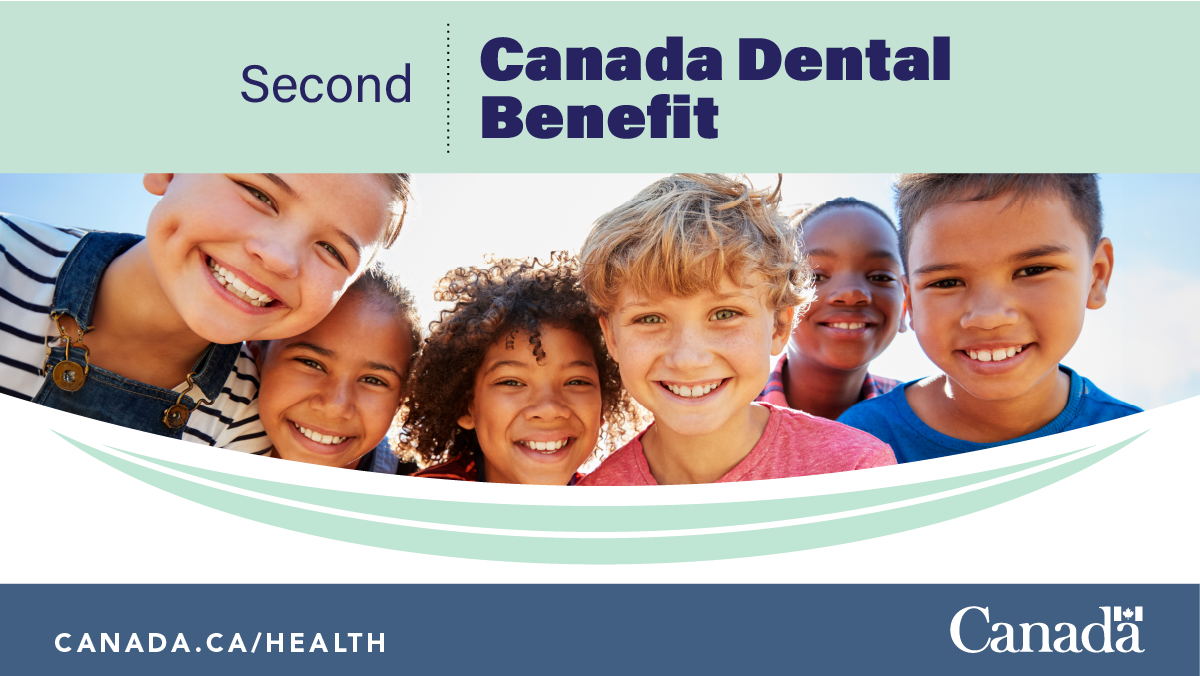
Frequently Asked Questions
To be eligible, families need to meet all of the following criteria for each child they apply for:
- Have a child under 12 years of age as of July 1, 2023, who does not have access to private dental insurance (employer-based or purchased through the applicant or other family member);
- Have an adjusted family net income under $90,000 per year;
- Have filed the previous year’s income tax and benefit return (for more information on how to file a return, visit Canada.ca/doing-your-taxes);
- Be the parent (or legal guardian) who receives the Canada Child Benefit for that child;
- Have incurred—or will incur—out of pocket expenses for the dental care of the eligible child that would not be fully reimbursed under another federal, provincial or territorial government program; and
- Provide information on the recent or planned oral health care visit in Canada between July 1, 2023, and June 30, 2024, that the benefit would be used to pay for, along with information about the oral health care provider.
Eligible children need to be 11 years old or under as of December 1, 2022, for the first benefit period, and 11 years old or under as of July 1, 2023, for the second benefit period.
The Canada Dental Benefit can be used for any oral health care provided by a regulated oral health professional licensed to practise in the place where care is provided. An official receipt must be provided for these services.
Coverage
The Canada Dental Benefit provides payments up to $650 per child under 12, per benefit period, for families with an adjusted net income under $90,000 per year.
- $650 is provided for each eligible child if the family’s adjusted net income is under $70,000.
- $390 is provided for each eligible child, if the family’s adjusted net income is between $70,000 and $79,999.
- $260 is provided for each eligible child, if the family’s adjusted net income is between $80,000 and $89,999.
No, the benefit is tax-free.
No, the benefit does not reduce other federal benefits.
Yes. We know that provincial and territorial programs do not cover dental care needs for children under 12 equally across Canada, and that in some cases, the programs focus only on emergency needs. Children under 12 who are currently covered by provincial or territorial programs are still eligible for the Canada Dental Benefit so long as they are incurring out of pocket expenses for dental care services—expenses that are not reimbursed under another federal, provincial or territorial government program—and if their family meets all of the criteria to qualify for the benefit.
We encourage applicants to validate whether the dental care services provided by the dental clinic/oral health professional will be fully covered by their provincial or territorial dental program, based on the eligibility of those programs, before applying to the Canada Dental Benefit.
However, families whose needs are met by their provincial or territorial programs and don’t have out of pocket expenses are not eligible for the benefit and should not apply.
Yes. Children under 12 covered by Non-Insured Health Benefits (NIHB) for registered First Nations and recognized Inuit continue to be covered by the robust dental coverage available to them under that program. If parents incur additional out of pocket oral health care expenses for their children under 12, beyond what may be covered by the NIHB dental benefit, they can apply for the Canada Dental Benefit for those additional expenses, provided they meet all the other criteria.
Application process
Applications for the second benefit period opened on July 1, 2023, and cover expenses incurred from July 1, 2023, to June 30, 2024. Applications for the first benefit period of the Canada Dental Benefit are now closed.
The benefit is not retroactive; however, applicants who received dental services with out of pocket expenses exceeding $650 in one of the benefit periods may be able to apply for an additional dental benefit payment during the second benefit period. Specific conditions apply, visit Canada.ca/dental for more details.
Eligible families who are unable to access the Internet can apply for the Canada Dental Benefit through the Canada Revenue Agency’s (CRA) dedicated phone line at 1-800-715-8836.
To receive the Canada Dental Benefit, applicants will need to make sure they have filed the previous year’s income tax and currently receive the Canada Child Benefit (CCB) for their eligible child. Filing taxes is easy with the Community Volunteer Income Tax Program (if eligible) or through NETFILE-certified software. They can also file online through the services of an electronic filer certified to use FILE service.
If applicants are unable to apply for these new programs online, they can call the CRA and complete their application over the phone with an agent. To validate their identity, applicants should make sure they have their social insurance number address, date of birth, and a copy of their assessed tax return from last year on hand for the CRA agent.
CRA’s My Account is a quick, easy and secure way to apply. To receive this benefit, parents/guardians must also be in receipt of the Canada Child Benefit. As a result, many applicants may already be familiar with My Account. Most applicants can expect to receive their payments within 5 business days if they are enrolled for direct deposit, and within 10-12 business days if they are receiving a cheque by mail.
Need to enroll for direct deposit? Follow the steps outlined on Canada.ca.
CRA uses a variety of evidence to verify an applicant’s eligibility. This includes an up-front verification of:
- adjusted family net income through filing of the previous year’s tax income
- child’s age (under 12) at date of application
- receiving the Canada Child Benefit
- the date of the dental care appointment
- the dental care provider’s name, address and phone number
- employer's name, address, and telephone number (if applicable)
- spouse or common-law partner's employer's name, address, and telephone number (if applicable)
Parents and guardians must keep their dental receipts for six years, for the first benefit period—dental services received between October 1, 2022, and June 30, 2023; and for the second benefit period—dental services received between July 1, 2023, to June 30, 2024, in case the CRA contacts them in the future to validate eligibility. Applicants must keep their mailing address with the CRA up to date, as they may be contacted by mail during the verification process. Applicants that are found to be ineligible for the benefit during the verification process will be required to repay the benefit they received.
Applicants must apply for the Canada Dental Benefit for each benefit period. Just as with the first benefit period, families can apply as soon as they have a confirmed appointment date with an eligible oral health provider. Families who meet eligibility criteria on July 1, 2023, can apply again to receive up to $650, depending on their family adjusted net income, for each eligible child under 12 for dental care services that are received between July 1, 2023, and June 30, 2024.
Eligible families cannot retroactively apply for the first benefit period once the deadline has passed (June 30, 2023).
However, eligible families who did not receive a payment in the first benefit period and who incurred dental services with out of pocket expenses exceeding $650 between October 1, 2022, and June 30, 2023, may apply for an additional payment of up to $650 during the second benefit period.
Families must have proof of dental services to show their child received dental care during the eligibility period of benefit period 1 (October 1, 2022, to June 30, 2023), with out of pocket expenses that exceeded $650, as well as meet all other eligibility criteria for the first benefit period. Specific conditions apply, visit Canada.ca/dental for more details.
Helpful links:
- Government of Canada FAQs: Canada Dental Benefit What You Need to Know
- CDA Responds to Federal Dental Care Announcement
- Importance of Maintaining Good Oral Health for Children
- Canada Dental Benefit promotional toolkit
Last updated: July 27, 2023
